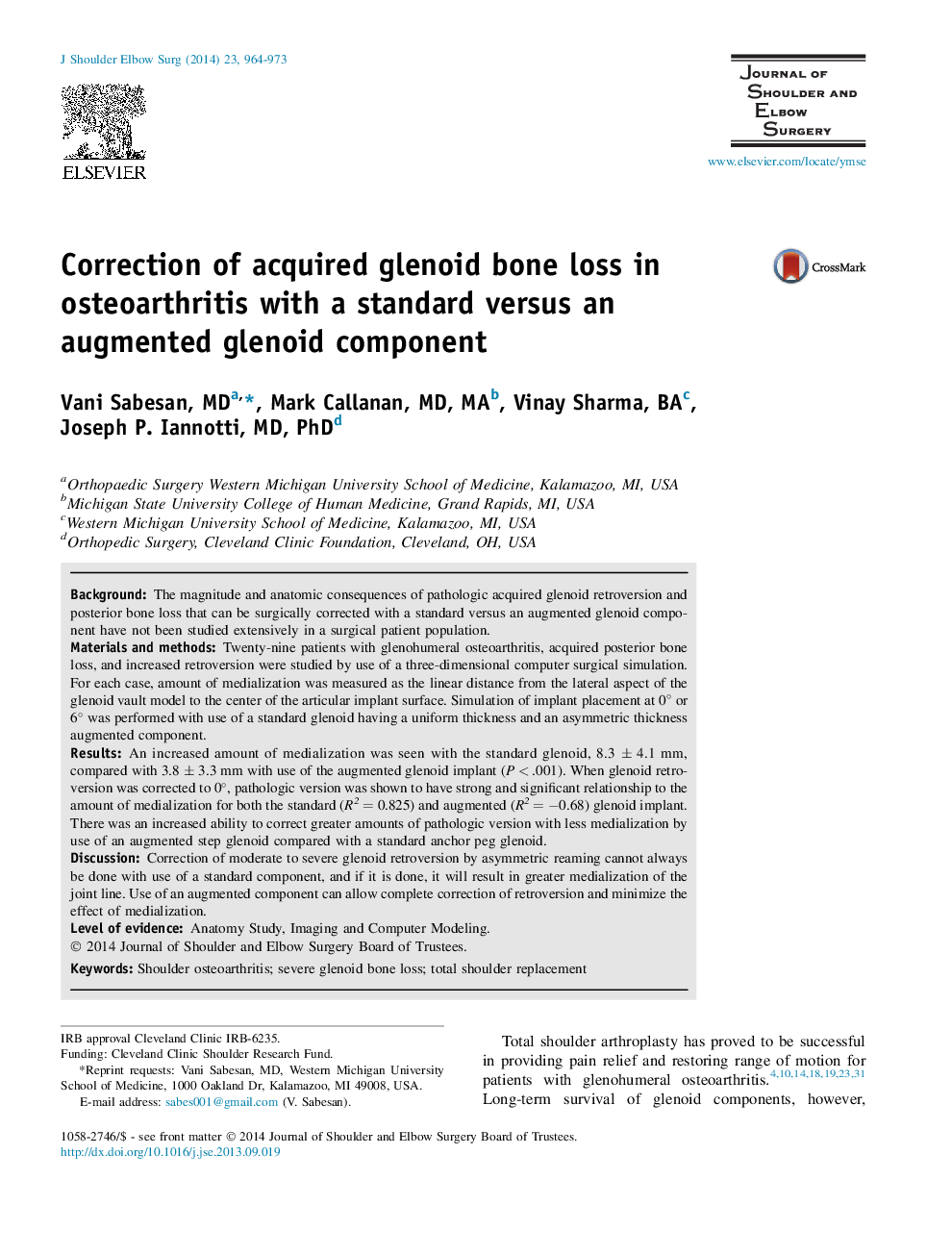| Article ID | Journal | Published Year | Pages | File Type |
|---|---|---|---|---|
| 4074238 | Journal of Shoulder and Elbow Surgery | 2014 | 10 Pages |
BackgroundThe magnitude and anatomic consequences of pathologic acquired glenoid retroversion and posterior bone loss that can be surgically corrected with a standard versus an augmented glenoid component have not been studied extensively in a surgical patient population.Materials and methodsTwenty-nine patients with glenohumeral osteoarthritis, acquired posterior bone loss, and increased retroversion were studied by use of a three-dimensional computer surgical simulation. For each case, amount of medialization was measured as the linear distance from the lateral aspect of the glenoid vault model to the center of the articular implant surface. Simulation of implant placement at 0° or 6° was performed with use of a standard glenoid having a uniform thickness and an asymmetric thickness augmented component.ResultsAn increased amount of medialization was seen with the standard glenoid, 8.3 ± 4.1 mm, compared with 3.8 ± 3.3 mm with use of the augmented glenoid implant (P < .001). When glenoid retroversion was corrected to 0°, pathologic version was shown to have strong and significant relationship to the amount of medialization for both the standard (R2 = 0.825) and augmented (R2 = −0.68) glenoid implant. There was an increased ability to correct greater amounts of pathologic version with less medialization by use of an augmented step glenoid compared with a standard anchor peg glenoid.DiscussionCorrection of moderate to severe glenoid retroversion by asymmetric reaming cannot always be done with use of a standard component, and if it is done, it will result in greater medialization of the joint line. Use of an augmented component can allow complete correction of retroversion and minimize the effect of medialization.
